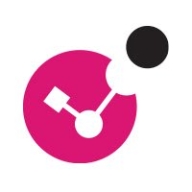

Check Point Harmony SASE and Microsoft Exchange Online Protection (EOP) compete in the cybersecurity category. Harmony SASE appears to have the upper hand due to its comprehensive security solutions, whereas EOP is more focused on email protection.
Features: Check Point Harmony SASE includes advanced security features like split tunneling, application access configuration, and enhanced VPN performance. It also offers Zero Trust Network Access and integration with Citrix SD-WAN. Microsoft Exchange Online Protection is known for its integration with Windows, ease of administration, and robust anti-phishing and anti-malware capabilities.
Room for Improvement: Check Point Harmony SASE can improve networking customization, portal access latency, and documentation. Users seek enhancements in Zero Trust Network Access to prevent breaches. Microsoft Exchange Online Protection has feedback on its pricing, stability, and configuration complexity. Users desire better gray email handling and third-party platform integration.
Ease of Deployment and Customer Service: Check Point Harmony SASE supports deployment across Private, Hybrid, and Public Clouds with mixed reviews on support efficiency. Microsoft Exchange Online Protection primarily offers Public Cloud deployment with some Hybrid options and generally efficient customer service despite occasional delays.
Pricing and ROI: Check Point Harmony SASE pricing is competitive with flexible licensing options, providing substantial ROI through cost savings and enhanced security. Microsoft Exchange Online Protection's pricing is often considered high but justified by features, offering value for larger organizations leveraging its benefits.
We have been able to retire legacy appliances such as traditional VPN concentrators and on-prem proxies, which cut costs and reduced maintenance overhead.
We are saving 40% of our time, which is good.
People working really hard, listening to every issue and request, and replying within hours.
I would rate support 10 out of 10.
Microsoft offers excellent 24/7 support.
My team is able to get the help they need when necessary.
The cloud-native model ensures we are not tied to any specific location or hardware, which has been a great game changer in terms of agility.
I would rate it nine out of ten for scalability.
Check Point Harmony SASE's scalability is good; it can handle growth easily, allowing me to easily add another region and gateway to have more people join in.
After the last improvement, I can say it is much more stable now.
Check Point Harmony SASE is stable most of the time, but there are still some issues that are hard to troubleshoot.
There are some lags and glitches with connectivity, so I would rate the stability as between seven or eight out of ten.
The product is lacking features that other competitors have, making it quite challenging to migrate customers to this solution because it feels very much unfinished.
A local data center in Turkey would enhance the product, as currently, our Internet traffic goes to another country, which is problematic for us.
We would appreciate more granular reporting and analytics, including better drill-down capabilities to investigate specific users or app activity.
The user interface of Microsoft Exchange Online Protection (EOP) has room for improvement.
Improving the search process by allowing searches with different types of parameters and facilitating searches within emails would be advantageous.
Cost efficiency is a consideration, as SASE products are not the cheapest security products.
The cost is a bit expensive for most users.
It is a bit expensive.
The pricing is reasonable.
Microsoft Exchange is more expensive compared to other services like Gmail.
I find the price of Microsoft Exchange Online Protection (EOP) to be fairly reasonable, and I have no problems with it.
The Zero Trust and segmentation have helped my team and our customers significantly because we are able to protect every scope and allow the work-from-home users to access internal resources while passing through a threat prevention gateway, ensuring that everything is safe.
The biggest win for us has been the visibility and control. We now know what is happening across all branches and users, regardless of their location, and we can respond to threats in real time.
Check Point Harmony SASE (formerly Perimeter 81) has positively impacted my organization by being very easy to integrate with other technologies, and it's not impactful on the traffic, so it can do its job without being heavy on the traffic.
We've benefited from the anti-phishing features of Microsoft Exchange Online Protection (EOP), as it has been quite accurate and has eliminated most of our phishing emails, making it really impressive.
The security features provided by Microsoft are robust.
It offers more features and better security, making it the best option for corporate environments.
| Product | Market Share (%) |
|---|---|
| Check Point Harmony SASE (formerly Perimeter 81) | 0.6% |
| Microsoft Exchange Online Protection (EOP) | 1.2% |
| Other | 98.2% |


| Company Size | Count |
|---|---|
| Small Business | 52 |
| Midsize Enterprise | 18 |
| Large Enterprise | 15 |
| Company Size | Count |
|---|---|
| Small Business | 24 |
| Midsize Enterprise | 7 |
| Large Enterprise | 10 |
Check Point Harmony SASE, formerly Perimeter 81, offers robust security features like split tunneling, MFA, and Zero Trust Network Access focused on secure remote access and optimized connectivity for remote teams.
Check Point Harmony SASE delivers advanced security through a user-friendly interface, efficient VPN connections, and a centralized management console. It enhances security with real-time threat intelligence from ThreatCloud and traffic management via built-in optimization. Firewall as a Service and Secure Web Gateway safeguard against unauthorized access and phishing. While users seek enhanced networking customizations and better integration with identity providers, there's an emphasis on improving reporting, real-time analytics, and policy management. Requests also include a Chrome extension, traffic balancing, and simplified configuration to address some resource-intensive aspects.
What are the key features of Check Point Harmony SASE?
How can organizations benefit from using Check Point Harmony SASE?
Check Point Harmony SASE is used across industries for secure remote access and connectivity, protecting sensitive data, and managing access to corporate resources. It is ideal for those with hybrid cloud models and requires comprehensive security measures combined with existing IT infrastructures to meet specific industry demands.
Microsoft Exchange Online Protection (EOP) is a comprehensive email filtering and security service designed to protect organizations from spam, malware, and other email-based threats. It provides advanced threat protection, anti-malware and anti-spam filtering, and data loss prevention capabilities.
With EOP, organizations can ensure the security and integrity of their email communications. It uses multiple layers of filtering and scanning to detect and block malicious content, including phishing attempts, viruses, and ransomware. EOP also leverages machine learning and artificial intelligence to continuously improve its threat detection capabilities.
In addition to its robust security features, EOP offers advanced anti-spam filtering to reduce unwanted and unsolicited emails. It uses a combination of reputation-based filtering, content filtering, and sender authentication techniques to identify and block spam messages.
EOP also includes data loss prevention (DLP) capabilities to prevent sensitive information from being leaked or shared inappropriately. It allows organizations to define policies to detect and prevent the transmission of sensitive data, such as credit card numbers or social security numbers, via email.
Furthermore, EOP integrates seamlessly with Microsoft Exchange Online and other Office 365 services, providing a unified and integrated email security solution. It can be easily managed through the Exchange admin center, allowing administrators to configure and monitor security settings, review reports, and manage quarantined emails.
We monitor all Anti-Malware Tools reviews to prevent fraudulent reviews and keep review quality high. We do not post reviews by company employees or direct competitors. We validate each review for authenticity via cross-reference with LinkedIn, and personal follow-up with the reviewer when necessary.